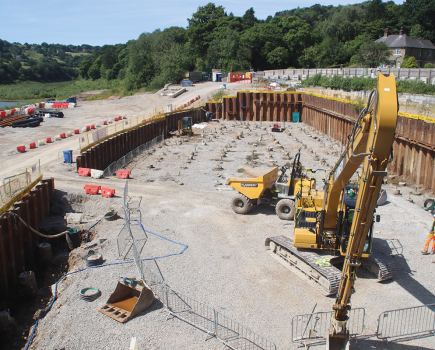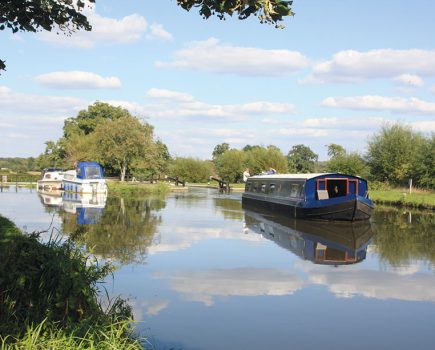Towpaths are getting smoother and wider, but CB columnist and award-winning current affairs TV producer, journalist and author Steve Haywood asks whether they’re for everyone or just speeding cyclists

The Canal & River Trust has been ‘improving’ 16 miles of towpath between Paddington and West Drayton in London. There was a ‘consultation’ on it, but you’ve missed it as it began on 24 October and closed 30 November. Not that you missed much.
According to Susannah Miller, co-ordinating the project, it wasn’t ‘a consultation in the formal sense of the word’. Damn right it wasn’t! A more honest way of putting it would be to admit it wasn’t a consultation, but a PR exercise to justify action that’s already been decided.
So what is CRT doing, then? In its own words, this project – ironically christened ‘Quietway’ – will mean ‘better quality surfaces’ on towpaths and ‘wider paths’, bringing ‘huge benefits to everyone’. Well, ny friend Alex Richards got it spot on whe he said: “This is just another example of CRT selling out to Transport for London and the cycling lobby Sustrans. Prioritising their interests over the rest of us.”
Alex asked the basic questions, how is it going to make things better? Better for whom? It’s true that as boaters we will, where possible, have a 40cm strip to hammer in our pins. Generous or what?
For walkers the conversion of the towpath to Tarmac will mean fewer puddles, but the smooth, narrow surface will make them vulnerable. “Will 40cm of muddy grass be better for anglers?” asks Alex. “Will it be better for families feeding ducks with what will be virtually a road behind them? It’d be like taking them for a picnic on the hard shoulder of the M25.”
Wildlife is not going to benefit, he argues. CRT makes big play of the towpaths as urban corridors of nature, but this will be shown up as a hollow boast when hedges and trees are cut back in order to clear passage for those using the Tarmac.
And, of course, we all know who is going to be using the Tarmac, don’t we? It won’t be cyclists – well, not if you’re a family having an afternoon outing on bikes, with the kids on training wheels. Or a youngster building up your confidence. Or someone in their later years rediscovering cycling as an aid to fitness.
No, these cycle paths – for that’s what they are – will be dominated by urban commuters trying to get to work on time, or by Lycra louts racing against the clock, trying to knock a second or two off their personal best on time trial computer sites.
They are people with no sense of what 20mph looks like to a pedestrian pottering along what was once a quiet towpath, people who have no idea of how easily they can hit people stepping off a boat inattentively, people who have no imagination to picture what damage can be caused to the vulnerable human body by a lump of metal hitting it at speeds half what they’re travelling.
Really, this has got to stop. We’ve had enough of these fraudulent consultations, which are no more than attempts to pretend that anyone is taking any notice whatsoever of our views as boaters. The facts are plain: we spend more time on the towpath than anyone in CRT head office and we have been telling them for years about the growing menace of cyclists. Talk to us individually and there will be virtually no-one who hasn’t been hit or nearly hit by a cyclist in the last five years, and those who haven’t will know someone who has.
But still CRT keeps encouraging faster towpath speeds by building smoother towpaths. It has been a problem in London for years, but now it is becoming a national issue as more sports cyclists use towpaths in other areas of the system. It is simply no use as a response trotting out a series of bumbling platitudes about ‘sharing the towpath’.
I am quite willing to share the towpath, and I can’t think of a boater who wouldn’t feel the same. But ask some of these speeding cyclists – if you can stop them – and you’ll find they aren’t too keen on the idea. In fact, many don’t even think we should be on the towpath. That’s why so many of them shout at us to get out the way, and use their bells like car horns so they don’t have to slow down.
If towpaths have to be improved, then they should be improved with a view to the majority of people who use them. They should be left as far as possible as grassy paths. If this isn’t possible, they should be improved by making them soft surfaces, gravel or pebble to discourage high cycle speeds.
But that wouldn’t be enough for Transport for London or Sustrans, would it? And without them there’d be no money.
Follow Steve on Twitter.
________________________
More from Steve Haywood:
The EA is shirking its responsibilities
The dirty truth about sea toilets and rivers
Why Lincoln’s moorings take the biscuit
Image(s) provided by:
Martin Ludgate







